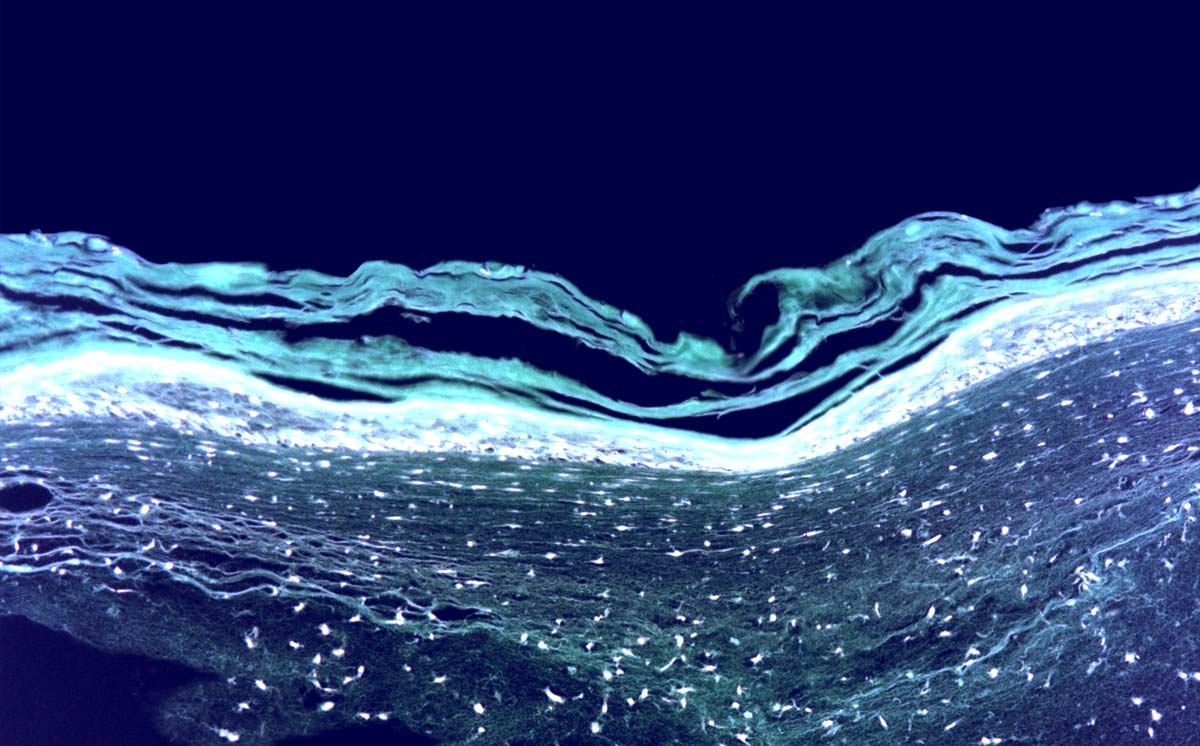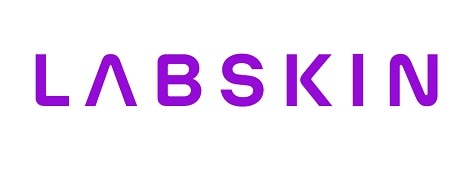May 6 2020
An interview with Alex Chapman, Head of Operations, Labskin and David Caballero-Lima, Research and Development Manager, Labskin
What is a human skin model? How does it differ from natural human skin?
Alex: A Human Skin Equivalent (HSE) is made from the same primary human cells but grown to a defined specification in a laboratory and not as complex as Human skin, lacking hair follicles and immune cells, but we are working on these draw backs.

Image credit: Labskin
Why are human skin models used in research? What are the advantages and limitations of human skin models over other methods?
Alex: HSE’s have a variety of advantages including the cells are still growing and dividing unlike ex-vivo skin, the model is well controlled in the lab environment unlike human volunteers and tends not to complain about punch biopsies. It is also based on human cells unlike animal models and is of course ethical.
What applications are there for laboratory grown skin models?
Alex: We do a variety of testing looking at how products effect the model or the microbiome, from anti-aging to anti-microbial, covering immune response, toxic effects and more.
How important is it that the skin model supports the microbiome? How does this affect the research model being used?
David: The skin microbiome interacts with the human body by regulating the immune system. A balanced microbiome is essential for a healthy skin. Several skin pathologies, such as eczema, psoriasis, rosacea, seborrheic dermatitis and acne vulgaris, are associated with unbalance of the microbiome (Dysbiosis). The ability of Labskin to support the microbiome allow us to study microbial/host interactions in an in vitro controlled environment which closely resemble in vivo situations.
Please give an overview of Labskin, the products and services that you offer.
David: Labskin currently offers a variety of services for skin care and pharmaceutical industry. We carried out typical skin irritation and sensitisation test with our own twist, by adding skin commensals or pathogens.
We look at probiotics and prebiotics ingredients and formulations for “microbiome friendly” claims. We test efficacy of soaps, cleansers, and sanitisers. We assess the effect of products to alleviate the symptoms of eczema and psoriasis.
Additionally, we can quantify skin drug permeability and metabolization. Labskin closely works with its clients to understand theirs R&D needs an come with answers by developing new testing methods that suit them.
Where did Labskin and the underlying technology come from? How are the human skin models produced?
Alex: The model was initially developed at Leeds University and then translated into a commercial product at our labs in York. The whole process takes about 6 weeks from the initial cell culture to the finished product.
Please give some case studies of these human skin models being used in the research community. What is your target market for these products?
David: Labskin has been used to study the differential response of human skin exposed to benign commensals and pathogens [1] which is clearly associated with the skin dysbiosis that occurs in eczema.
Labskin HSE has also been used to develop a psoriasis model [2] that allow us to test products to reduce its symptoms. Furthermore, collaborative research with academic institutions have demonstrated the ability of Labskin to recapitulate some of the most important steps in the healing process after mechanical wounding [3] and temperature burns (in press).
Additional publications has study drug penetration using Labskin and Mass Spectrometry Imaging [4]. Those works, together with Labskin expertise in microbial colonisation of the model permit the study of antimicrobials, healing modulators and medical devices in the field of wound care management.
Could Labskin skin models be used for personalised medicine? How quickly can the microbiome of an individual be replicated on skin models?
Alex: For us it is a simple process to lift the microbiome from a volunteer and transplant it on to Labskin with many replicates. As researchers identify the skin organisms that can be detrimental to skin heath in more detail, we will be able to identify these strains and that could lead to individual treatment plans.
How is AI used within Labskin?
David: Microbiome data is obtained by sequencing the genetic material of all microbes present in that microbiome. The size and complexity of the sequencing data sets make it difficult to analyse. Using AI and publicly available data of the skin microbiome of healthy volunteers and volunteers suffering from eczema and psoriasis we have been able to identify a number of features (microbial groups) that define those skin conditions.
We use our ability to isolate and transplant the skin microbiome from volunteers’ to Labskin model together with the AI models we have developed to assess the efficacy of products to shift the diseased microbiome to a healthy state.
What does the future hold for Labskin? How would you like to see these skin models being used in the future?
Alex: We want to keep improving our model to make it the most realistic skin model possible, to remove the need for animal testing and to generate the best possible pre-clinical data for our clients.
Where can readers find more information?
Alex: Check the ‘About’ section of our website, www.labskin.co.uk, it has plenty of info on the model and how it is used
About Alex Chapman, B.Sc 
![]()
Alex has almost 20 years’ experience working in large and small companies, at a variety of levels.
Alex trained as a Chemist while at the national Central Science Laboratory a department of the Food and Environment Agency in the United Kingdom. As an Analytical Chemist he developed new testing methods for the agency, specialising in GC & LC-MS.
Alex later joined Paraytec Ltd., a UV imaging detector manufacturer and University of York spin-out, and rose to Sales and Technical Manager. He was responsible for overall management of laboratory testing and managed product development and sales activities.
Alex joined Labskin in 2017 and is now Head of Operations. He is responsible for the rapid scaling of both the product and services offering (which integrates testing and secure online data) and working with clients to showcase Labskin expertise and meet client needs.
Alex also leads technical pre-sales and sales support for Labskin, interacting with customers and partners, and is a frequent speaker at events and conferences.
![]()

About David Caballero-Lima, B.Sc, PhD.
David received his undergraduate degree in Biology and his PhD in Biomedical Sciences from the Universidad de Extremadura in Spain. David took postdoctoral research positions at the University of Sheffield and the University of Manchester, with both roles focussing on studying human pathogens via the development of diagnostic devices and obtaining a greater understanding in the regulation of vesicle transportation in morphological changes.
David was initially Services Manager at Labskin, responsible for all microbiology work and service projects at Labskin, bringing his 15 years’ experience working with microbiology and host-pathogen interactions.
As R&D Manager David now leads the research department, focusing on the development of new methods for studying the native skin microflora, prebiotic, probiotics and antimicrobial effects of ingredients and formulation for pharmaceutical and cosmeceutical studies. David is a key collaborator on international research bids, as a peer with leading international experts from academia and industry.
References
- Holland, D.B., et al., Differential innate immune responses of a living skin equivalent model colonized by Staphylococcus epidermidis or Staphylococcus aureus. FEMS Microbiol Lett, 2009. 290(2): p. 149-55.
- Harvey, A., et al., MALDI-MSI for the analysis of a 3D tissue-engineered psoriatic skin model. Proteomics, 2016. 16(11-12): p. 1718-25.
- Lewis, E.E.L., et al., Examination of the skin barrier repair/wound healing process using a living skin equivalent model and matrix-assisted laser desorption-ionization-mass spectrometry imaging. Int J Cosmet Sci, 2018. 40(2): p. 148-156.
- Russo, C., et al., Quantitative Investigation of Terbinafine Hydrochloride Absorption into a Living Skin Equivalent Model by MALDI-MSI. Anal Chem, 2018. 90(16): p. 10031-10038.
Labskin
At Labskin we deliver human skin microbiology services to support your product R&D activities in the cosmetic, personal care, medical device and pharmaceutical sectors. With our sector experience and use of technology, you will be accessing industry-focused services supported by world-leading skin science expertise.
Whether you need rapid, focused analysis or flexible, tailor-made research programs we can help you develop and validate skincare ingredients and products which really work.
Our skin model is a 3D human skin equivalent that incorporates vital biological components to model normal skin function.
Developed over 12 years with more than 30 scientific journal publications, it is made from young keratinocytes (human skin cells) and adult fibroblasts (metabolically-active, collagen-producing human skin cells).
“An ideal platform for basic or applied skin research, testing compounds or formulated products for the cosmetic, pharmaceutical and chemical sectors.”